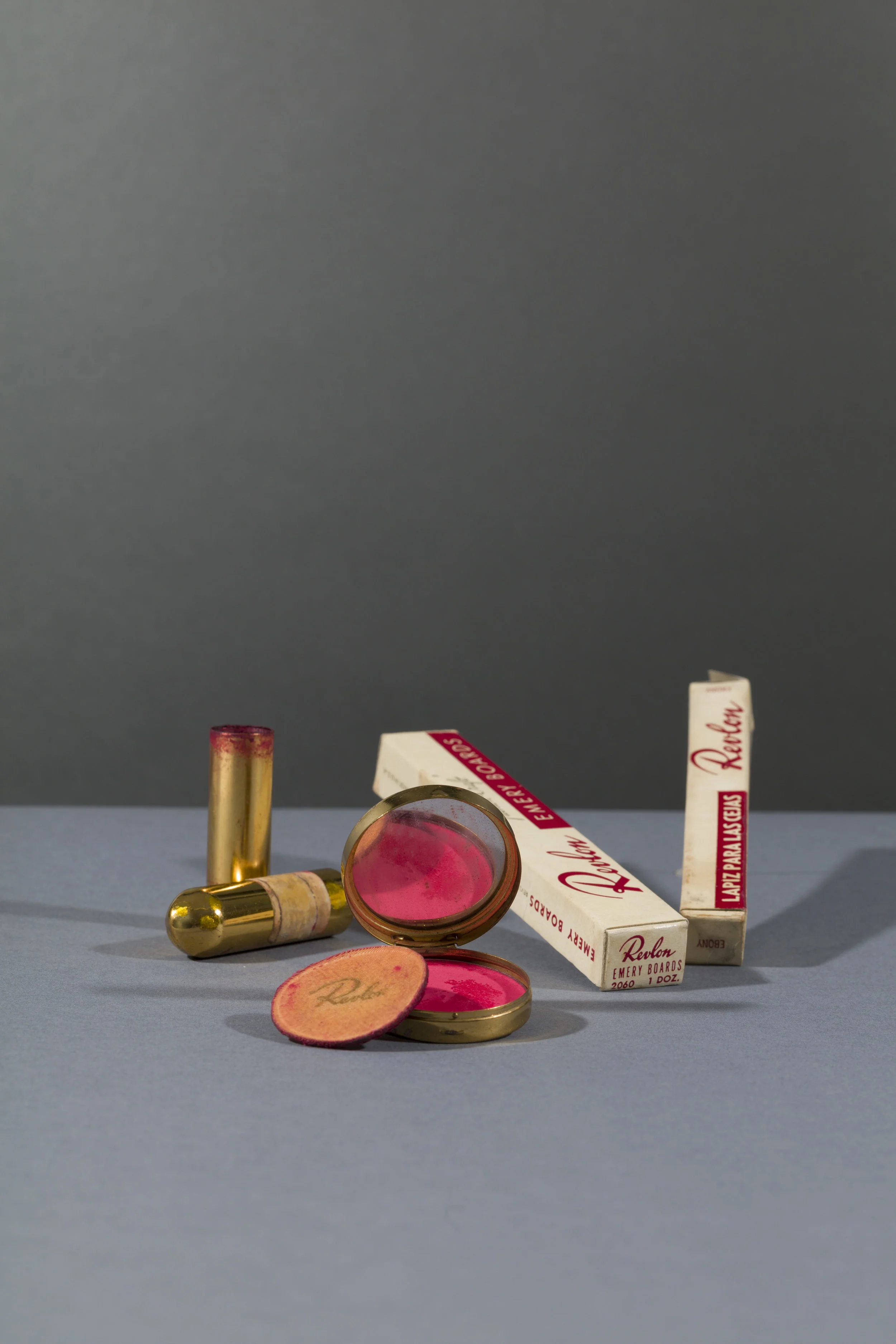Ahead of its opening on Saturday 16 June, we sent Tahmina Begum to view Frida Kahlo: Making Her Self Up, at the V&A in London...
+Modern+Art+International+Foundation+(Courtesy+María+and+Manuel+Reyero).JPG)
Self-portrait on the Border between Mexico and the United States of America, Frida Kahlo, 1932 (c) Modern Art International Foundation (Courtesy María and Manuel Reyero)
"Disability, Strength, And Documenting Yourself: Why Frida Kahlo Is So Representative Of Millennial Women Now".
There are a few times when walking into a press viewing to an art exhibition that women - in all shapes, sizes and colour – dominate the room. But why was I surprised? This is the first time iconic artist Frida Kahlo’s work has left the Kahlo museo in Mexico. With bated breath, London was ready to receive arguably one of the most influential artists millennial women are looking up to...
Known for her style and beauty, possibly more than her art – the red painted lips, her crown twisted and braided with flowers and of course, her monobrow, these details were surprisingly not the centre of the exhibition. Just like the title suggested, it was about what made up the artist – from the physical to the non-tangible.

Frida Kahlo, c. 1926. Museo Frida Kahlo. © Diego Riviera and Frida Kahlo Archives, Banco de México, Fiduciary of the Trust of the Diego Riviera and Frida Kahlo Museums.
Similar to many millennial women, the painter hated being boxed into one category. She understood how dynamic the human condition was and was even famously quoted: “I have enjoyed being contradictory”.
Wandering around Kahlo’s beginnings and belongings not only felt surreal, but there was a strong presence that Kahlo’s spirit was conscious of everything, including life itself. V&A Co-curator Claire Wilcox said she wanted the kind of ambience to feel almost like you were in a dream, “we didn’t want it to feel like the past or present but that you were within her life”.
Bed bound after a tram accident when she was 18, disability and illness is often overshadowed by fashion, when really it was a key player in how Kahlo viewed the world. From observation, it was rightly the strongest theme throughout the exhibition – after all, it was this constriction that willed Kahlo to take up painting and in doing so, forced the surrealist (who hated being known for one type of art) to really look at herself.
During Tristram Hunt’s speech at the exhibition opening, the Director of the V&A said that though disability shaped Kahlo’s life through the way she “fashioned her own identity”, it was clear the artist “transcended disability”.
It wasn’t that Kahlo tried to escape the reality of her pain, in the words of Wilcox, “everything in her life was deliberate from her art to her furniture” down to the painted crutches and orthopaedic corsets, it was that Kahlo saw herself through many lenses. One included having to lay forcefully in bed, the other was her marriage to Diego Rivera and her affairs, how her ethnicity (she was German, Indian and Spanish) fit into her Mexican nationality and her complex relationships with the United States.

Frida Kahlo with Olmec figurine, 1939, photograph by Nickolas Muray © Nickolas Muray Photo Archives
If you didn’t know who Frida Khalo was and did a quick google search, you may look at her paintings and think she was narcissistic - self-centred, even – but really all Kahlo was doing is what is celebrated now: exploring all aspects of her identity and documenting it along the way.
Though Frida Kahlo looked within herself, her feeling was really communal, what other people, other women of colour, those with disabilities felt - she just showed the complexities in how we viewed ourselves and what we thought others saw and mandated everyone around her, even those looking at her craft, to do the same.
In 1944, Kahlo sat for a series of ‘mirror’ photographs in Casa Azul by her friend and photographer, Lola Alvarez Bravo. Though this reminds Bravo of Kahlo's painting “The Two Fridas” it’s as though “there really is another person behind the mirror”. Kahlo is a recent but relevant pioneer in understanding that the way you see yourself is beyond you. Though your “I” is fixated it’s not binary.
This all came down to the clothes - from three piece suits passed down from her late German father she wore to push away gender norms to the rebozo (shawl) across her arms and the huipil (tunic) placed on her body to display her loyalty to Mexican traditions - especially during an Americanising revolution.

Revlon compact and powderpuff with blusher in ‘Clear Red’ and Revlon lipstick in ‘Everything’s Rosy’; emery boards and eyebrow pencil in ‘Ebony’. Before 1954. Photograph Javier Hinojosa. © Diego Riviera and Frida Kahlo Archives, Banco de México, Fiduciary of the Trust of the Diego Riviera and Frida Kahlo Museums
Peering into Kahlo's rouge blush pot and Revlon lipsticks seems surreal but the feeling across the room really is of warmth. The strength that comes from enjoying the blend of life. It echoes poet Nayyirah Waheed’s words: “do not choose the lesser life. do you hear me. do you hear me. Choose the life that is. yours. the life that is seducing your lungs. that is dripping down your chin.” This isn’t just an example of grabbing life but an instruction. Thank you, Frida.
Frida Kahlo: Making Her Self Up, 16 June–14 November 2018. Sponsored by Grosvenor Britain & Ireland
